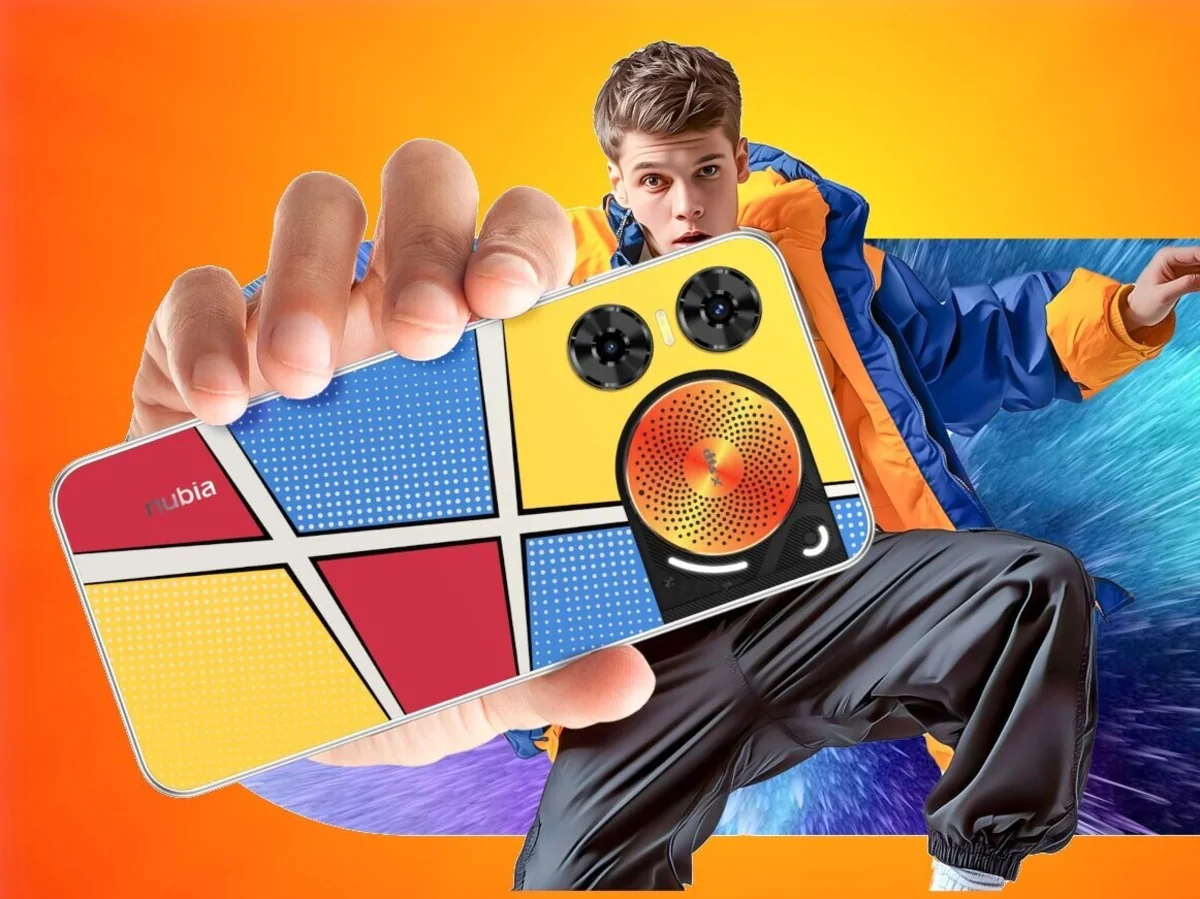In the bustling orchestra of the smartphone market, where flagship devices boast cutting-edge processors and cameras that rival professional DSLRs, there exists a quieter, more specialized niche. This is where the Nubia Music 2 emerges, a budget-friendly smartphone that conducts a symphony of value, prioritizing audio performance above all else.
While it may not be the flashiest or most powerful device on the market, the Nubia Music 2 offers a unique proposition for audiophiles and music lovers seeking an affordable way to elevate their mobile listening experience. This in-depth review will delve into the phone’s sonic capabilities, design aesthetics, performance benchmarks, and overall value proposition, dissecting its strengths and weaknesses to help you determine if it’s the right instrument for your mobile needs.
Nubia Music 2
Unleashing the Sonic Fury: A 2.1-Channel Audio Oasis
The Nubia Music 2’s headline act is undoubtedly its 2.1-channel audio system, a rare and welcome feature in the budget smartphone arena. This sonic trifecta comprises three full-range speakers, strategically positioned to deliver an immersive soundscape that belies the phone’s modest price tag.
ZTE, the maestro behind this auditory masterpiece, has equipped the Nubia Music 2 with DTS:X Ultra technology. This audio wizardry unlocks spatial audio support, enveloping the listener in a 3D soundscape that adds depth and dimension to music, movies, and games. Whether you’re traversing the vast landscapes of Skyrim, grooving to your favorite tunes, or catching up on the latest blockbuster, the Nubia Music 2 ensures an immersive audio experience.

But the sonic spectacle doesn’t stop there. This phone pumps out a maximum volume of 95 dB, a level that can rival some portable Bluetooth speakers. This means you can share your music with friends, enjoy a movie without straining to hear the dialogue, or simply crank up the volume and lose yourself in your favorite tunes.
Adding a visual flourish to the auditory feast, the Nubia Music 2 features LED strips that pulsate in sync with the music. These vibrant lights dance to the rhythm, creating a mesmerizing visual spectacle that complements the immersive audio experience. Imagine yourself at a mini-concert, your phone transforming into a pocket-sized light show as you groove to your favorite beats.
While its predecessor, the Nubia Music, sported a dual 3.5mm headphone jack setup, the Nubia Music 2 opts for a single 3.5mm jack. This more conventional approach caters to the majority of wired audio enthusiasts, allowing them to connect their favorite headphones or earphones and enjoy their music in private, without sacrificing audio quality.

A Visual Overture: Design and Display
The Nubia Music 2 inherits the playful aesthetics of its predecessor, adding a touch of visual flair with LED embellishments that accentuate its youthful and vibrant personality. Available in two eye-catching color options, Melody Wave and Pop Art, the phone exudes a bold and energetic vibe that resonates with its music-centric focus.

The front of the device is dominated by a spacious 6.7-inch LCD screen, offering ample real estate for enjoying multimedia content and navigating the user interface. While the HD+ resolution might seem modest in the age of pixel-dense displays, the 120 Hz refresh rate elevates the viewing experience. This high refresh rate ensures smoother scrolling, reduced motion blur, and an overall more fluid visual experience, especially noticeable when gaming or browsing through social media feeds.
Performance: A Balanced Composition
Under the hood, the Nubia Music 2 is powered by the Unisoc T7200 chipset, a rebranded version of the older Unisoc T606. While not a powerhouse in the realm of mobile processors, it delivers adequate performance for everyday tasks such as web browsing, social media, email, and light gaming. Paired with 4 GB of RAM and 128 GB of internal storage, the phone handles basic operations with ease, ensuring a smooth and responsive user experience for casual users.
However, it’s important to acknowledge that the Nubia Music 2 is not designed for heavy multitasking or demanding applications. If your mobile needs extend beyond casual use, you might encounter performance hiccups when running resource-intensive apps or games.
On the software front, the device ships with Android U, likely based on Android 14. While this ensures a modern and up-to-date user experience out of the box, the long-term software support remains uncertain. Given its budget-oriented positioning, it’s unlikely that the Nubia Music 2 will receive extensive software updates beyond the initial version.

Capturing the Moment: Cameras and Battery Life
The Nubia Music 2’s camera setup comprises a 50-megapixel main camera and a 5-megapixel selfie camera. While these specifications might not rival the camera prowess of flagship devices, they are more than capable of capturing everyday moments, from casual snapshots to video calls with friends and family.
The 50-megapixel main camera delivers decent image quality in well-lit conditions, capturing details and colors with reasonable accuracy. However, its low-light performance might leave you wanting, as noise and grain become more prominent in dimly lit environments.
The 5-megapixel selfie camera is adequate for video calls and social media selfies, but don’t expect it to produce stunning self-portraits.

On the battery front, the Nubia Music 2 houses a 5,000 mAh battery, a capacity that should easily power you through a full day of moderate use. Whether you’re streaming music, browsing the web, or chatting with friends, you can rest assured that the phone will keep up with your daily demands.
Charging the device, however, might require some patience. The Nubia Music 2 supports 10 W wired charging, a relatively slow charging speed compared to modern standards. While this might not be a deal-breaker for casual users, those accustomed to fast charging might find the charging time a bit tedious.
Final Verdict: A Harmonious Blend of Value and Performance
The Nubia Music 2 might not be a flagship contender, but it carves a unique niche for itself in the budget smartphone segment. Its focus on audio performance, coupled with its vibrant design and long-lasting battery life, makes it an appealing choice for music lovers and entertainment enthusiasts.
While the phone’s outdated chipset and limited memory might deter power users, its budget-friendly price and niche features make it a compelling option for those seeking a low-cost digital audio player with smartphone functionality.





